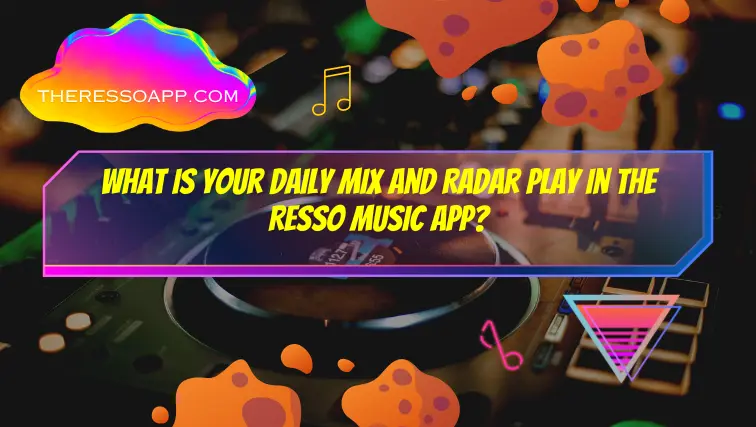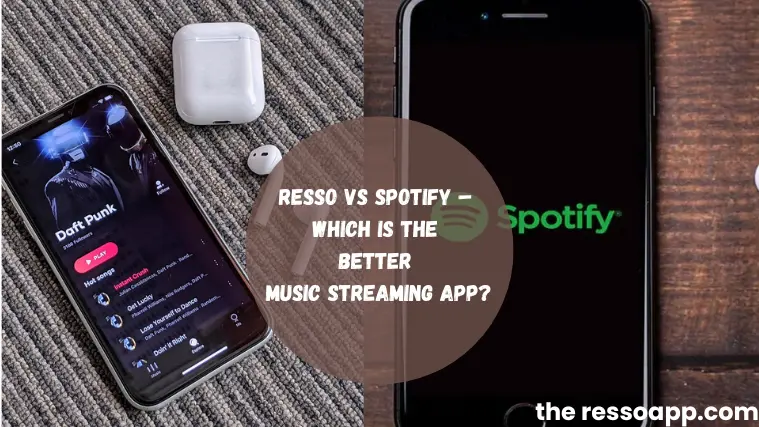Resso VS Tidal Music: Who is the best Music Streaming Service in 2024?
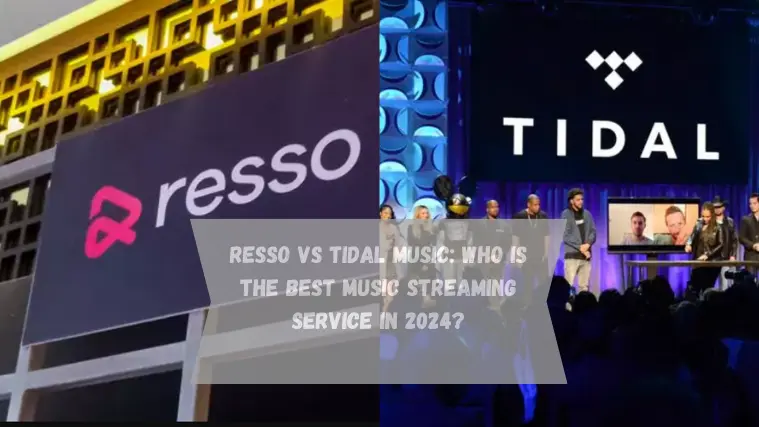
We always provide assistance in finding the ideal music streaming service based on your listening tastes by going through a variety of options. Our prior study shed light on Resso VS Spotify and Resso VS Apple Music. Now, we are going to take off on a completely new sound adventure where Resso and Tidal will face off.
Do you find it difficult to choose between Resso and Tidal Music, two music streaming services, and you’re not sure about their offers, sound quality, or a solid social network? You can answer this mystery with the help of this post, so don’t worry and get ready to download your ideal mate.
This article will walk through the strengths and weaknesses of two popular music streaming services, Resso VS Tidal Music, to help you decide which one stands out for your music journey. We will explore their music libraries, social features, pricing plans, and much more to assist you in making a good decision.
Resso VS Tidal Music: Quick Comparison
| Features | Resso | Tidal |
|---|---|---|
| Paid Subscription | Cheaper | Expensive |
| Sound Quality | Standard | High-fidelity options |
| Music Library Focus | Regional & Global | Vast & handpick |
| Library Size | Smaller than Tidal | Over 75 million songs |
| Free Tier | Limited features with ads | Limited features with ads |
| Social Features | Strong | Limited |
Resso VS Tidal Music
What exactly is Resso
In 2020, the music streaming service launched in India and has since then spread to Indonesia, Mexico, and Brazil, among other nations. Its social integration feature allows users to exchange music, lyrics, and comments with friends and followers, which makes it the most well-known. It aims to create a network of music lovers that can communicate and explore new music together.

What exactly is Tidal?
Tidal music streaming service was launched by Jay-Z in 2015. It offers a similar number of songs to the likes of Spotify and Apple Music, but the emphasis is on the highest audio quality. The key feature of it is how it pays to its artists. It is a higher-paying service for musicians.
Resso VS Tidal: Comparing Features
Here are the following key features of both the Resso VS Tidal Music streaming apps:
Content Library and Variety of Music
The different options in the content libraries show how well they support a range of musical tastes and exploration methods.
Resso
Resso provides millions of songs across numerous genres, including both local and foreign music. It emphasizes that it improves the process of discovering new music, through interactive material and synchronized lyrics. Resso Premium has regional and international tracks but is limited to specific regional content depending on the user’s location. It also features exclusive collaborations but may not have exclusive partnerships compared to Spotify.
Tidal
Tidal provides around 80 million songs, and the number will continue to grow. It does not support popular podcasts but a short, curated list of podcasts, most of which are related to the hip-hop style. Tidal has a strong presence in multiple countries. It supports around 350,000 videos to watch, the majority of which are music videos.
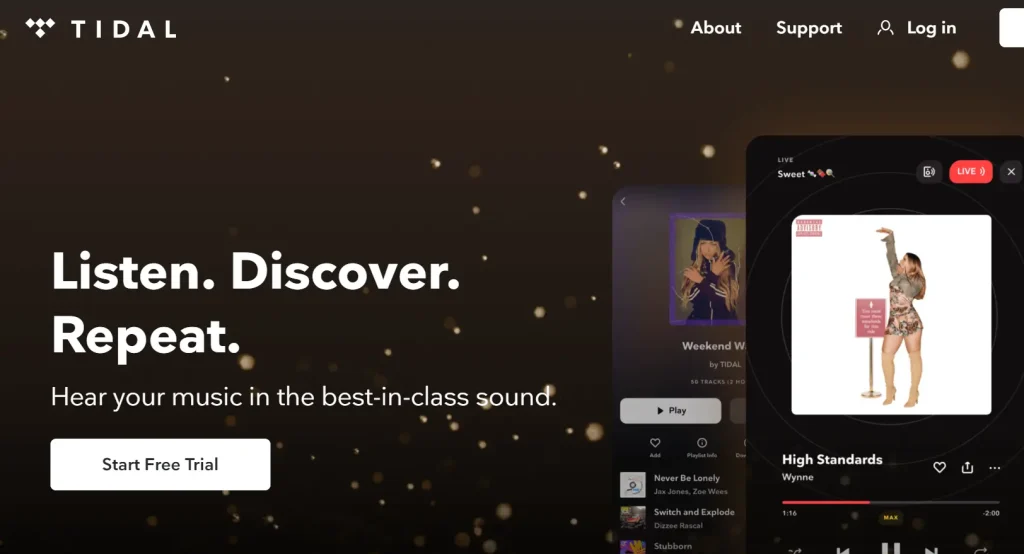
User Interface Design and Navigation
There are a few differences between the user interface design and navigation of both apps.
Resso
- Resso also has an interesting user interface. It has bright colors, engaging animations, and a card-based design for playlists and songs.
- The app navigation bar makes it simple to navigate between its different parts and offers quick access to Home, Search, and Library.
- Basic controls like play, pause, skip, and repeat are provided, and the user can also like or comment on songs.
- The software promotes user customization and a sense of community by enabling users to add a display photo, bio, and music selections to their profile.
Tidal
- The primary color scheme is black and white, with occasional highlights to draw attention to certain information.
- The tidal user interface is renowned for being simple and contemporary, emphasizing excellent album art and artist photographs.
- Tidal provides quick access to Home, Explore, My Collection, Search, and Profile.
- Tidal provides unique content and allows browsing by artist, genre, and mood. You can use the search function to look for particular musicians, tracks, albums, and playlists.
Sound Quality
When it comes to audio quality, the battle ”Resso VS Tidal Music” heated up. Both offer improved audio quality. The choice between the two would depend on how discerning you are about audio quality and whether lossless streaming is a priority for you.
Resso
- Users with the free version can stream music at standard audio quality, which is around 128 kbps.
- Subscription users can stream at high definition, which is around 320 kbps.
Tidal
- It offers standard quality in the AAC coding, which streams at a bitrate of 320 kbps by default.
- Tidal’s HiFi and HiFi Plus plans normally offer the High Fidelity and MQA options, while the lower-tier plans only offer standard quality.

Social Interaction Features
The differences in social interaction features highlight the approaches that Resso VS Tidal Music takes in fostering user engagement, music discovery, and community interaction within their platforms.
Resso
- Resso allows users to leave comments on songs.
- Resso displays lyrics when songs are playing.
- It allows users to share songs, playlists, and comments with friends and followers.
- It allows direct interaction with artists through comments and engagement on their profiles and releases.
- Resso Premium allows engagement through comments, likes, and discussions on songs and playlists.
Tidal
- Tidal provides limited options for user comments and feedback on songs.
- It provides lyrics for some songs, but they are not aligned in real-time with the music.
- You can share music with friends by sending them a link to a song, album, artist, or playlist. However, there’s no direct sharing within the app or conversations about the music you share.
- Tidal allows you to follow artists and keeps you updated on their new releases and upcoming events.
- Users can pick specific artists, genres, or song categories for their custom radio stations.
Free Version Limitations and Ad-Supported Listening
Let’s continue comparing Resso VS Tidal Music because the battle has come to an amazing point now.
Resso
Users face restrictions on most songs. It provides standard audio quality. Its free version experiences advertisements between songs.
Tidal
Tidal offers a 30-day free trial period to its new customers to explore its premium features. Users must subscribe to one of its paid plans, which may include HiFi and HiFi Plus options for good sound. It does not offer an ad-free version.
Pricing and Subscription Plans
Pricing and subscription plans(Resso VS Tidal Music)are game changers, so carefully read their plans below.
Resso
- It offers Resso Premium and Resso Premium Family. Its pricing may vary by region. It offers ad-free listening, offline downloads, unlimited skips, and higher audio quality compared to its free versions.
- It offers many deals, like a subscription to a video streaming service or a telecom plan, by partnering with other companies, depending on the regional level. It accepts different payment methods, such as credit/debit cards, PayPal, and carrier billing or gift cards.
Tidal
- It offers standard-quality audio, and access to its music library is included in the Premium subscription. Its HiFi plan provides high-fidelity listening in the unique FLAC format. Its HiFi Plus subscription includes MQA audio for even higher audio fidelity.
- Tidal’s complete collection is available to HiFi Plus users in MQA format for a rich auditory experience. It provides family options for HiFi, Premium, and HiFi Plus subscriptions, enabling several people to share a single account. It offers discounts for students and military personnel to access premium features at low prices.
Geographical Availability
When it comes to geographical availability, Tidal is one step ahead of Resso. Resso VS Tidal Music:
Resso
Resso initially launched in select countries such as India, Indonesia, and Brazil, with plans for expansion to additional regions. It offers localized content in its specific regions, including playlists, podcasts, and recommendations. The availability may vary depending on licensing agreements and regulatory requirements in each country.
Tidal
Tidal has a broader global presence compared to Resso, but its availability may still vary by country. It boasts global availability in over 60 countries as of May 2024. There might be a few regions with restrictions due to licensing agreements.
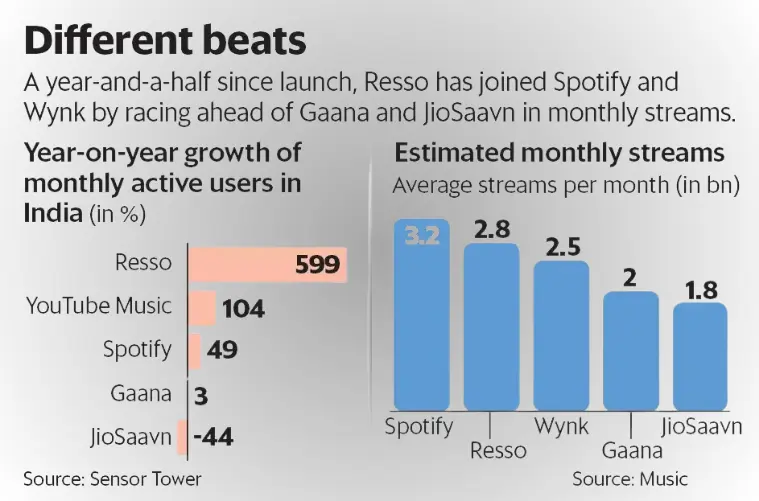
Conclusion
The above battle, Resso VS Tidal Music, summarised that choosing between the two apps depends upon personal priorities and tastes. Resso differentiates itself with its personalized music discovery experience, interactive features, and social integration. Tidal succeeds due to its vast collection of content, high-quality audio, and availability across all platforms.
FAQs
Who provides a better experience with social music Resso VS Tidal Music?
Resso wins! It promotes a more interactive and social listening experience by enabling you to write and share lyrics, comments, and even GIFs related to music.
Which service has a larger selection of songs?
With a massive library that contains more than 75 million songs, Tidal wins here because it focuses more on a globally chosen selection.
Does the quality of the audio change?
Of course! Tidal emphasizes high-fidelity audio options for its premium tiers and provides MQA and lossless for a more immersive listening experience. Resso’s free and premium levels both provide typical audio quality.
How about the cost of both music services Resso VS Tidal Music?
In general, Resso’s monthly membership fee is marginally less than Tidal’s. To appeal to audiophiles, Tidal may offer more expensive tiers with lossless audio and exclusive content.
Where are these services available for use?
Resso and Tidal are ideal for listening while on the go because they both provide mobile apps for iOS and Android smartphones.


